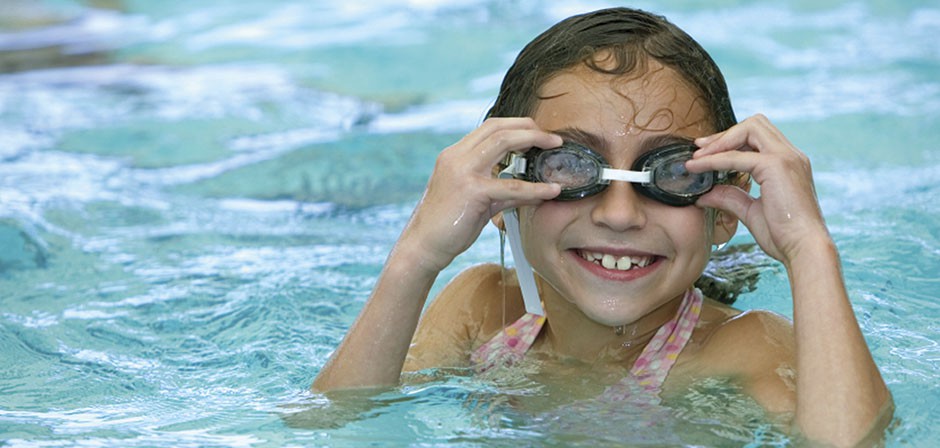
Before summer ever gets here and you’ll have opportunity to participate in both beach and pool swimming, be sure to learn the important differences between the two.
Beach swimming and pool swimming have very different risks and environmental factors that affect your swimming performance and your safety.
Beach Swimming
Open Water
Beach swimming involves open water. Beginner and novice swimmers should stay in areas designated as lifeguard protected (or the surf) to avoid the dangers and risks that open water can bring. Always obey all rules and instructions from lifeguards whenever you’re in a beach swimming situation.
Weather Conditions
Since the weather can change open water from calm to ferocious in the blink of an eye, it is important to stay alert and informed about the area’s weather conditions. Pay attention to warning flags and ask lifeguards if you are concerned about current water conditions and potential hazards.
Strong Tides and Rip Currents
Even those confident of their swimming skills and safety in the water should make sure they have enough energy to swim back to shore over tides and currents. Rip currents (responsible for many deaths every year) are very dangerous and can appear in any open water area, in low spots and breaks in the sand, or near piers. Avoid permanent rip currents by staying at least 100 feet away from jetties and piers. If you do find yourself in a current, swim or float parallel to the shore until you can get out of it and make your way back to shore. The potential for having to do such maneuvers is why you should have plenty of energy when open water swimming.
Pool Swimming
Pool Drains, Openings, and Suctions
Pools have drains, suctions, and entrapments that can be hazardous for small children. It’s wise to always use caution around these parts of the pool. Be aware that hair, jewelry and even body limbs can get entangled in these pool parts. When children are in hot tubs or spa areas, it is a recommended practice to keep jets turned off. These are suction devices that can pull them under in these limited spaces areas.
Pool Depth
Most swimming pools have varied depths. This is especially true if the pool has a diving board. Children should always be reminded of pool rules which include no running and horseplay in the pool area and that diving in the deep areas must only be done while under close adult supervision.
Appropriate Safety Equipment
Another best practice is setting up a pool safety fence surrounding the pool area when the pool is not in use. This can prevent children from falling into the pool and getting in a distress situation. Avoid leaving small water toys, balls, or electrical appliances in and around the pool. These items can harm or distract small children. When a pool is in use, be sure that there is adult supervision to closely monitor swimmers at all times.
Learn to Swim from Qualified Swim Professionals
The best water safety tip for beach or pool swimming is to learn to swim. Swim professionals can make sure that children are enrolled in age appropriate lessons and are learning swimming skills in the best progression for them to become proficient swimmers. Swimming lessons give children water safety and swimming skills that last a life time and could save his/her life.
All water activities (pool parties, boat rides, snorkeling, and water sports)require the ability to swim to be fun and safe. Making sure children acquire this skill sets them up for a safety and fun. It’s not that swimming eliminates every risk that water poses, but it does give the child the ability to swim to safety or to keep themselves afloat until help arrives if they ever find themselves in a risky situation.


Conversations